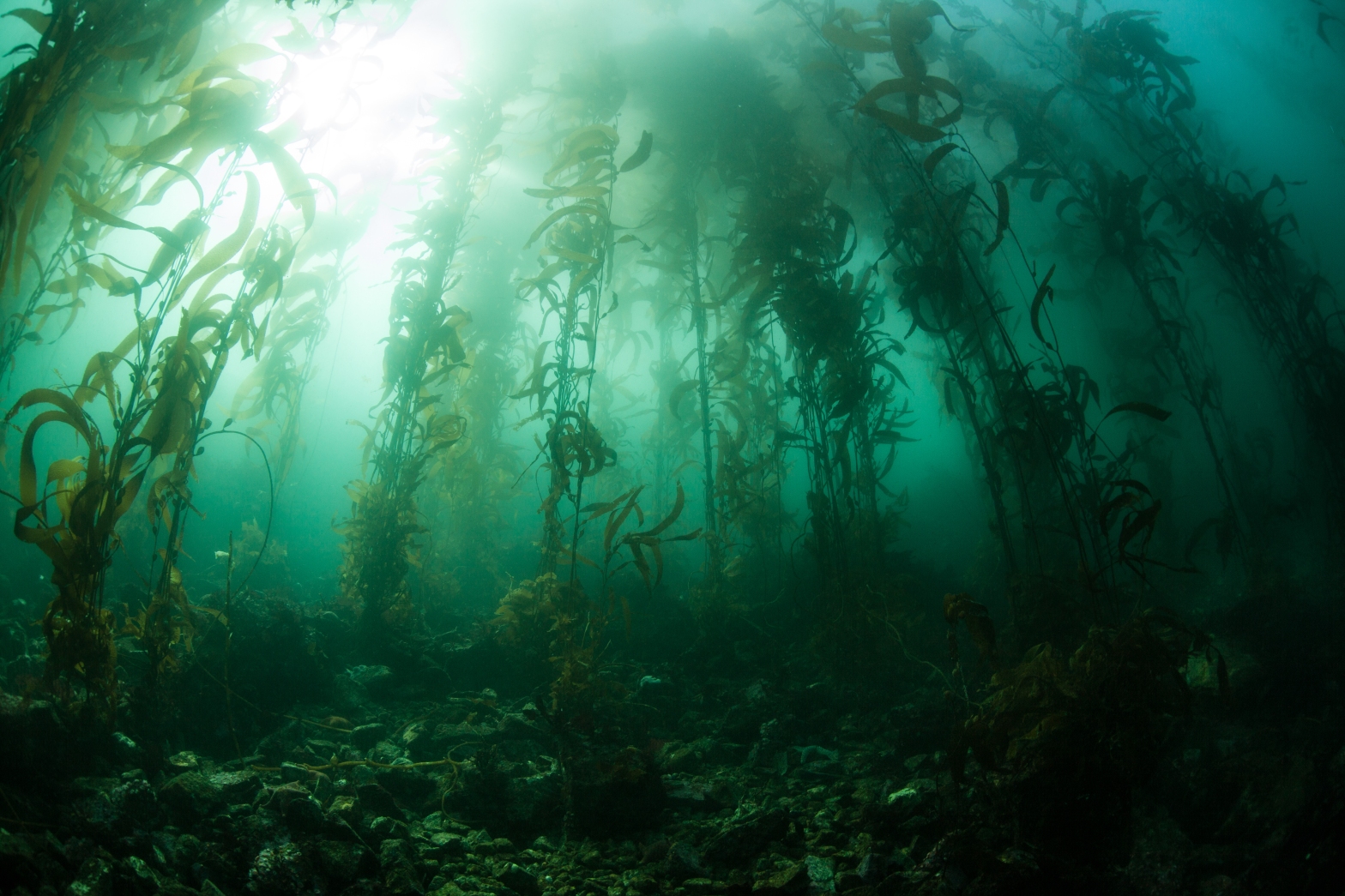Underwater kelp forests are among the most productive places on Earth. The forests supports a range of marine life and they are one of the most biodiverse places on our planet. Here you’ll find squid nurseries, crabs, seals, whales, and sea otters. Kelps are not plants, they are algae. Some species form large underwater forests that are referred to as the rain forests of the ocean since they are so biodiverse and brimming with life. Kelp thrive in cold water with lots of waves. The currents and waves bring nutrients that the kelp need to survive. Kelp is fast growing – up to 60 cm per day.
Kelp forests play an important role in maintaining ecological balance and naturally combating changes in climate. The seaweed forests help with storing carbon by taking up inorganic carbon including carbon dioxide and converting it into organic biomass. Organic material that is stored in the deeper ocean is unlikely to be disturbed for thousands of years. Kelp and other types of marine vegetation can absorb 20 times more carbon dioxide per acre than forests on land. Kelp can also reduce the force of storm-driven tides and surges.
Blue carbon refers to the role that seagrasses and mangroves can play in carbon sequestration – the process where carbon dioxide is removed from the atmosphere and held in either solid or liquid form
Sea otters play a crucial role in keeping the kelp forest healthy. When sea otters are lost from an ecosystem, the number of sea urchins spike. The urchins chew through the holdfast of the base of the kelp and the rest of the kelp washes away. Amazingly even after sea urchins have slashed through kelp beds, they lie dormant waiting for new kelp sprouts. Thus, it is very difficult to reestablish a kelp forest when there has been an outbreak of kelp-eating sea urchins.
